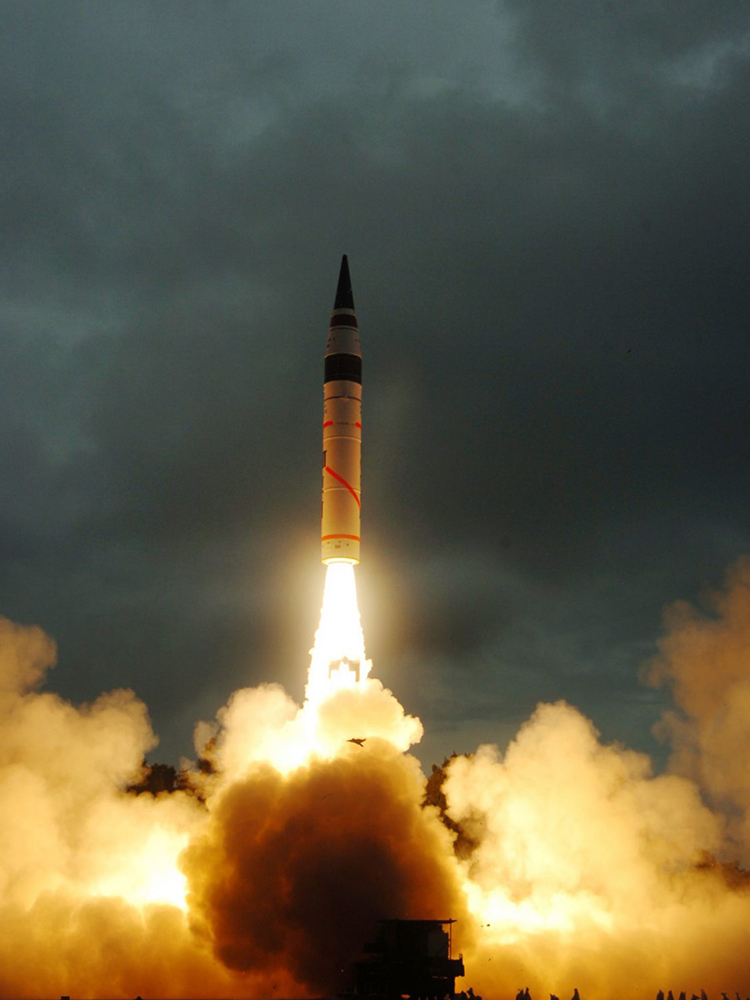HISTORY OF NUCLEAR OWNERSHIP INDIA
.jpg)
HISTORY OF NUCLEAR OWNERSHIP INDIA
The discovery and development of atomic separation technology into this nuclear can
be a source of inspiration as well as concern, due to the discovery of nuclear technology in one
side can provide soslusi to many countries to be source of energy, but side
others can also be used to be a very deadly weapon. Initially, efforts
research for the implementation of nuclear energy that has the basis of peaceful purposes has
bringing into the field of nuclear reactor technology as electric power. If threats
deviation or misuse of nuclear material from peaceful purposes is not prevented by the regime
international non proliferation, then more and more countries will have nuclear weapons,
thereby increasing the risk of conflict in the region.
More and more countries are
possessing nuclear weapons would add a dimension of threats to peace security
world.
Nuclear proliferation is the development and spread of nuclear weapons
(both quantitatively and qualitatively) and its ability as a mass destructor.
Nuclear became a focal of attention in the global security agenda in this era is
because of its nuclear capability as a weapon of mass destruction that can destroy a
state and the entire inhabitants of the earth. In the Non-Proliferation Treaty of Nuclear Weapons
(NPT) there are only 5 countries recognized as possessing nuclear weapons, namely China,
France, Russia, Britain and the United States. But over time many countries
who allegedly possessed nuclear weapons.

India is currently developing missiles to target the whole of China from a military base in southern India.
The report was published by US media, The Bulletin, edition of "After midnight" July-August 2017. The source of the report quotes two American nuclear experts.
India is estimated to have produced about 600 kg of plutonium sufficient to produce 150 to 200 nuclear warheads. However, the nuclear warhead probably only produced 120 to 130 units. Similarly, a report written by two US nuclear experts Hans M Kristensen and Robert S Norris, in an article titled "Indian nuclear forces 2017".
According to the two experts, India's nuclear strategy-which has traditionally focused on Pakistan-is now focused on pressuring China.
India, they continued, currently operates seven nuclear-capable weapon systems. Namely, two aircraft, four ground-based ballistic missiles, and one sea-based ballistic missile.
"There are at least four more systems in development. The development program is in a dynamic phase, with longshore and longshore missiles emerging for possible application in the next decade, "the two experts said.
Kristensen and Norris said that western, central and southern China could target Agni-1 and Agni-2 missiles capable of sped more than 2,000 km and could carry nuclear warheads.
Still hunting both nuclear experts, India is also developing Agni-4 missiles that will be able to strike targets in almost all areas of China, including Beijing and Shanghai from northeastern India. Not only that, India also has inter-continental ballistic missiles (ICBM) capable of carrying nuclear warheads up to more than 5,000 km.
Reference :
- https://international.sindonews.com/read/1220549/42/india-kembangkan-rudal-untuk-targetkan-seluruh-wilayah-china-1499971860
- https://www.google.co.id/search?biw=1366&bih=598&ei=eYm0WtqIC4fUvgSiiKG4AQ&q=sejarah+nuklir+india&oq=Nuklir+INDIA&gs_l=psy-ab.1.0.0i71k1l8.0.0.0.9664.0.0.0.0.0.0.0.0..0.0....0...1..64.psy-ab..0.0.0....0.Q8qQipg6iLQ
- The United Nations and Nuclear Non-Proliferation, The United Nations Blue Book Series, Volume III,
Department of Public Information, New York, 1995. Hlm.3

